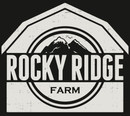
Aren't You Doing It The Hard Way?
We get a lot of sideways looks from most of the locals around here when we start talking about how we farm. Most of them think we're crazy and that we've embraced some sort of hippy, environmentalist propaganda. Well, that may be partially true; one of the things we've learned in this journey is "don't shoot the messenger!" The hippies weren't wrong about everything!
Rob grew up on a dairy farm just down the road. He loved the lifestyle, but he was certain he wasn't coming back to the farm. He watched his parents' constant need for an outside income to prop up the farm and decided that there wasn't a feasible way forward in agriculture. 
Fast forward about ten years, we were in graduate school in Virginia preparing for an instructor position at West Point, we had a chance encounter with Joel Salatin of Polyface Farms. Joel introduced us to the concept of Regenerative Agriculture. 
A simple way to think about Regenerative Agriculture is to only use practices that put more into the land than you take out. Thus, the land base is always improving, your animals are healthier and you're improving the environment. Regenerative Agriculture tries to work "with the grain" of nature instead of fighting it every step of the way and forcing into our mechanical, efficient boxes.
At the same time, we realized that our "clean" diet wasn't nearly as clean as we thought. Health and fitness has always been a big part of our lives. We worked out hard and did our best to eat non-processed foods and lean meat. But our interaction with Joel pulled back the curtain on what we thought we knew about food production. The more we learned, the more we realized that our industrialized food system was awash in toxicity.

The biggest problem with industrial agriculture is that it uses chemicals to prop up bad management practices in the name of efficiency. Whether it is pork, chicken or beef, industrial ag puts thousands of animals into small, confinement facilities and then uses growth hormones, medicated feeds and a cocktail of chemical inputs to manage the disease and parasite load that results from the living conditions. Little items like insecticide fly tags placed in most cow's ears. Tags so toxic that if they fall off in a stream while that cow goes down for a drink, it will kill the fish in the creek. It says so on the label. 
This doesn't even touch on herbicides and pesticides that are sprayed on the animals' feed or the liberal bathing of meat and equipment in harsh disinfectants to control bacteria in large scale meat packing factories. A growing body of evidence is finally breaking through that links this continued use of chemicals to the spike in chronic disease that America has experienced since the mid-80's.

We were horrified to learn the state of our food systems as we dove deeper down the rabbit hole. Especially for someone who grew up in agriculture, it was a bit of a shock. The good news is that there is great cause for hope. A new generation of farmers inspired by pioneers like Joel, were taking a stand against these systems and blazing a different trail.
These farmers were practicing regenerative agriculture. They worked hard to mimic nature's design and managed their animals in a way that is in keeping with their natural behaviors. The result is a system that is remarkable in its ability to grow healthy animals, improve soils and provide healthy food for humans. Amazingly, as these farmers worked with nature to keep their animals moving across the landscape and placed them in systems that leveraged their instincts, the need for outside inputs plummeted, animal stress was drastically reduced, disease became non-existent, and the health of the soil rose in tandem with the nutrition value of the meat!

Their stories inspired us to join their ranks. The amazing thing is that it also opens up a new path to success for farmers that are willing to produce a high-quality product and bring it directly to the people who need it. Regenerative agriculture is management intensive, but it's not nearly as capital intensive as traditional farming. This opens the door to motivated young farmers like us, who believe that local food integrity is worth fighting for, and that healthy food choices are essential to a healthy lifestyle.
So yeah, how we farm looks different, and we may be crazy. But we'll take that chance, it's worth the risk.

Mike
Hello Rocky Ridge,
While it may be different, it is not crazy. We agree with you and appreciate the extra time and effort it takes to farm the way you are.
My wife and I have a somewhat similar story as far as how we eat, and although we aren’t as strict as we once were, the rabbit hole does run deep. For us, it started when our oldest was just about a year old and a facebook post caught my eye. It was titled something along the lines of, “The 10 Ingredients Banned In Most Countries Still In Your Food.”
When I read that I was amazed at what we put in our food, and it led me to do a deep dive on the topic. It really makes you think when most of the world is banning ingredients, and yet they are somehow still find and good for us here in the US.
All that being said, may you and the family get all the support you need to do this. May God bless you and keep you and make His face shine upon you as you learn how to steward the right way, benefitting all who one day take a taste of what real food is.
janet
Great journey! Thanks for sharing. You are still at West Point? I am too far away in the Berkshires.